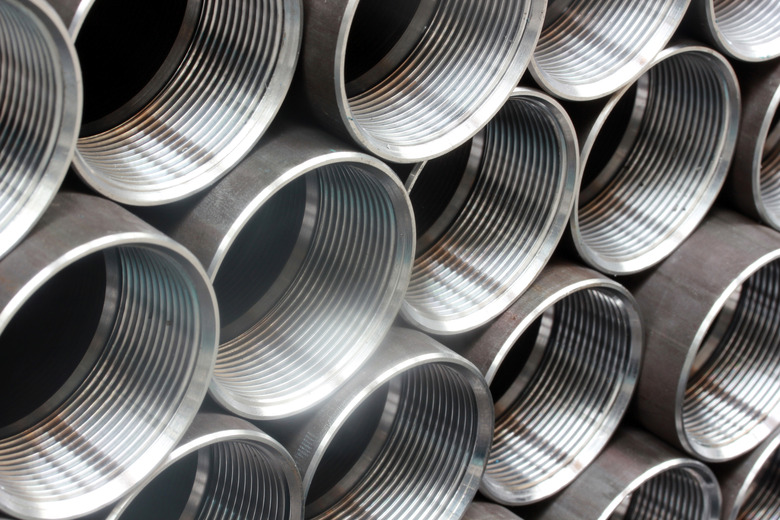What Objects Are Made Out Of Nickel?
Nickel is a versatile element used for products as widely varied as tableware and handcuffs. Nickel coins contain nickel metal, of course. Nickel electroplating provides a protective coating that is also attractive, with a shiny finish that appeals to manufacturers of decorative items like vanity faucets, garden fountains, stainless steel serving trays, knick-knacks and Christmas decorations. Pure nickel is used less often than nickel alloys that provide benefits like greater strength or greater heat resistance than nickel alone.
TL;DR (Too Long; Didn't Read)
In addition to its use in coins, nickel-plated items like faucets or bumpers are common. Nickel is also used in electronics and as a component of stainless steel.
Pure Nickel
Pure Nickel
Nickel that is chemically pure or combined with very small amounts of other metals is used in electronics and for processing chemicals, especially in foods and synthetic fibers. Because pure nickel is a reliable conductor of electricity, it's used for wires in electronics, in batteries and electrodes. Pure nickel is also a heat conductor and resists corrosion, particularly from chemicals and caustic substances, and it is used in heat exchangers where resistance to corrosion is needed.
Nickel Plating
Nickel Plating
Nickel is applied to a variety of products by a process known as electroplating. The nickel coin is no longer made completely of nickel; it's composed of 75 percent copper covered by 25 percent nickel. Nickel plating is used to cover car bumpers and wheels, and on motorcycles and bikes. It's also used as a protective coating on parts for machinery to help protect against wear, and to encase metals that are exposed to corrosive elements.
Stainless Steel
Stainless Steel
Nickel is alloyed with chromium and iron to form stainless steel for kitchen sinks, stainless flatware and cookware. These alloys contain about 8 to 10 percent nickel and 18 percent chromium, while the remainder is iron. For marine roofing materials, 3 percent molybdenum replaces an equal amount of iron in the alloy for additional protection against rust. Steel wire is electroplated with nickel for use in building and electrical applications.
Nickel Copper Alloys
Nickel Copper Alloys
Stronger than pure nickel, nickel-copper alloys comprise a minimum of 63 percent nickel and 28 to 34 percent copper. These alloys also contain — at a maximum — 2 percent manganese and 2.5 percent iron, and are widely used in oil refineries. They also have many marine-related uses where durable, corrosion-resistant products are required. Because this alloy is a heat conductor, it's often used in heat exchangers that routinely encounter sea water.
Nickel Chromium Alloys
Nickel Chromium Alloys
Nickel-chromium alloys are used in products requiring high resistance to heat. Because metals in their pure forms can break down under intense heat, they are alloyed to provide greater resistance. This alloy is used in industrial furnaces, heating elements for electrical cooking equipment, resistors and home heating appliances. Nickel — combined with chromium and cobalt, along with small amounts of titanium and aluminum — was used in turbine blades for Concorde jet engines.
References
Cite This Article
MLA
Morris, Margaret. "What Objects Are Made Out Of Nickel?" sciencing.com, https://www.sciencing.com/objects-made-out-nickel-8593586/. 17 April 2018.
APA
Morris, Margaret. (2018, April 17). What Objects Are Made Out Of Nickel?. sciencing.com. Retrieved from https://www.sciencing.com/objects-made-out-nickel-8593586/
Chicago
Morris, Margaret. What Objects Are Made Out Of Nickel? last modified March 24, 2022. https://www.sciencing.com/objects-made-out-nickel-8593586/
